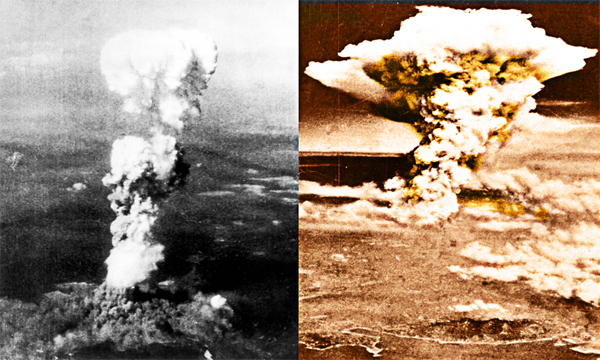
Atomic bombing of Hiroshima on August 06, 1945
Atomic bombing of Hiroshima: On the morning of August 6, 1945, during World War II (1939-45), an American B-29 Boeing Superfortress bomber dropped the world’s first deployed atomic bomb over the Japanese city of Hiroshima. The explosion immediately killed an estimated 80,000 people; tens of thousands more would later die of radiation exposure.
By July 1945, Germany had surrendered, and the war in Europe was over. Japan, however, refused to submit to the terms outlined in the Allies’ Potsdam Declaration. It appeared to American leaders that the only way to compel Japan’s unconditional surrender was to invade and conquer the Japanese home islands. Although an estimated 300,000 Japanese civilians had already died from starvation and bombing raids, Japan’s government showed no sign of capitulation. Instead, American intelligence intercepts revealed that by August 2, Japan had already deployed more than 560,000 soldiers and thousands of suicide planes and boats on the island of Kyushu to meet the expected American invasion of Japan.
Additional reports correctly surmised that the Japanese military intended to execute all American prisoners in Japan in the event of an Allied landing. These frightening figures portended a costlier battle for the United States than any previously fought during the war. By comparison, U.S. forces suffered 49,000 casualties, including 12,000 men killed in action, when facing less than 120,000 Japanese soldiers during the battle for the island of Okinawa from April to June of 1945. At least 110,000 Japanese soldiers and more than 100,000 Okinawan civilians, a third of the island’s prewar population, also perished in the campaign. American casualties on Okinawa weighed heavily on the minds of American planners who looked ahead to the invasion of Japan. Japan’s leaders hoped to prevail, not by defeating American forces, but by inflicting massive casualties and thereby breaking the resolve of the American public.
This was the situation that confronted American President Harry S. Truman in the summer of 1945 when he authorized the use of the world’s first atomic bomb. In light of intelligence reports about Japan’s commitment to continue fighting, Truman and his military advisors were determined to use every weapon at their disposal in order to bring the war to an immediate end. Consequently, neither Truman nor any of his advisors ever debated if the atomic bombs should be used, only how and where they should be used.
In the spring of 1945, the American government convened a committee of scientists and military officers to determine how best to use the bombs. This group unanimously declared that there was no guarantee that demonstrating the bombs to the Japanese in a deserted area would convince Japanese leaders to surrender. It was vital that Japan be convinced to surrender as fast as possible because the United States had just two atomic bombs available in July 1945 and additional weapons would not be ready to deploy for several more weeks. Meanwhile, thousands of Chinese, American, and Japanese soldiers continued to die each day the war continued.
Consequently, Truman approved the long-standing plans for the U.S. Army Air Force to drop atomic bombs on a list of preselected Japanese cities. The list of targets excluded Tokyo and Kyoto because of their political and historic importance. Instead, the intended target of the first bomb was Hiroshima, a fan-shaped city of approximately 550,000 people that occupied the estuary of the Ota River. The city was also home to the headquarters of the Japanese army that defended the island of Kyushu as well as a number of war industries.
At 2:45 a.m. on Monday August 6, 1945, three American B-29 bombers of the 509th Composite Group took off from an airfield on the Pacific island of Tinian, 1,500 miles south of Japan. Colonel Paul Tibbets piloted the lead bomber, “Enola Gay”, which carried a nuclear bomb nicknamed “Little Boy”. Despite the bomb’s moniker, it weighed nearly 10,000 pounds. As a result, the overloaded Enola Gay used more than two miles of runway to get aloft. At 7:15 a.m., the bomber crew armed the bomb, and the plane began its ascent to the bombing altitude of 31,000 feet.
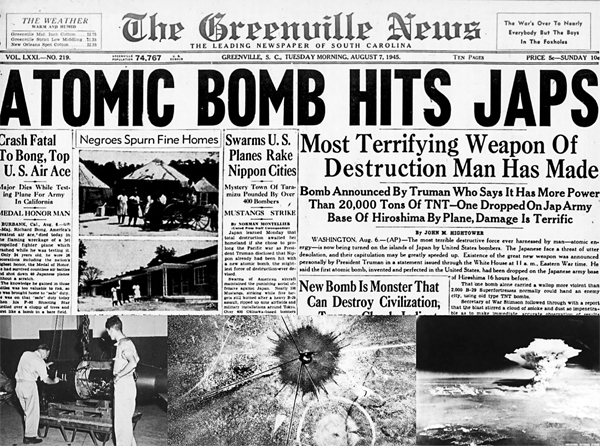
Meanwhile, in Hiroshima, Reverend Kiyoshi Tanimoto awoke at 5 a.m. Hiroshima time, which was an hour behind Tinian time. Tanimoto was the pastor of the Hiroshima Methodist Church, and “a small man, quick to talk, laugh, and cry”. Tanimoto was a thoughtful and cautious man who had sent his wife and baby to the relative safety of a northern suburb. Tanimoto remained in the city to remove the transportable objects in his church to the safety of a suburban estate. He had slept poorly because of several air raid warnings the previous night.
Hiroshima had not yet endured an American bombing raid, but its good fortune was not expected to last. That morning, Tanimoto had agreed to help a friend move a large armoire filled with clothes out to the suburbs. As the two men trundled the piece of furniture through the streets, they heard an air raid siren go off. The alarm sounded every morning when American weather planes flew overhead, so the men were not particularly worried. They continued on with their handcart through the city streets. When the pair reached their destination, “there was no sound of planes. The morning was still; the place was cool and pleasant”.
At 9:14 a.m. Hiroshima time, the Enola Gay arrived over the city. The Aioi Bridge, which bombardier Thomas Ferebee used as an aiming point, was clearly visible through the plane’s bombsight. Ferebee took control of the bomber and opened the bomb bay doors. Just after 9:15 a.m., Ferebee released “Little Boy” from its restraints and the bomb fell away from the Enola Gay.
The plane jumped nearly 10 feet at the sudden loss in weight. Tibbets immediately resumed control of the plane and banked it sharply on a 155 degree turn. He had practiced this difficult maneuver for months because he had been instructed that he had less than 45 seconds to get his plane clear of the subsequent explosion. Not even the scientists who designed the bomb were sure if the Enola Gay would survive the shock waves from the blast.
“Little Boy” fell almost six miles in 43 seconds before detonating at an altitude of 2,000 feet. The bomb exploded with the force of more than 15,000 tons of TNT directly over a surgical clinic, 500 feet from the Aioi Bridge. Less than two percent of the bomb’s uranium achieved fission, but the resulting reaction engulfed the city in a blinding flash of heat and light. The temperature at ground level reached 7,000 degrees Fahrenheit in less than a second. The bomb vaporized people half a mile away from ground zero. Bronze statues melted, roof tiles fused together, and the exposed skin of people miles away burned from the intense infrared energy unleashed. At least 80,000 people died instantly.
Reverend Tanimoto saw “a tremendous flash of light cut across the sky… from east to west, from the city toward the hills. It seemed a sheet of sun.” Because Tanimoto was two miles from the epicenter of the explosion, he had a few seconds to throw himself between two large rocks in the garden of his friend’s house. “He felt a sudden pressure, and then splinters and pieces of board and fragments of tile fell on him.” The house had collapsed, along with the concrete wall surrounding the garden. The day grew darker and darker under a massive dust cloud.
From the Enola Gay, Tibbets and his crew saw “a giant purple mushroom” that ”had already risen to a height of 45,000 feet, three miles above our altitude, and was still boiling upward like something terribly alive.” Though the plane was already miles away, the cloud looked like it would engulf the bomber that had spawned it. “Even more fearsome”, to Tibbets,
“was the sight on the ground below. At the base of the cloud, fires were springing up everywhere amid a turbulent mass of smoke that had the appearance of bubbling hot tar… The city we had seen so clearly in the sunlight a few minutes before was now an ugly smudge. It had completely disappeared under this awful blanket of smoke and fire.”
In the minutes, hours, and days that followed the bombing, survivors in Hiroshima tried desperately to locate loved ones and care for the thousands of wounded. Some people exhibited horrible burns, while others who outwardly appeared unscathed later died painful deaths from radiation poisoning. Thousands of people were buried in the debris of their homes. Most structures in the city had been constructed of wood with tile roofs. All but a handful of concrete structures in the city center had been completely leveled.
President Harry Truman was aboard the cruiser USS Augusta on his way back from the Potsdam Conference when he learned of the bomb’s successful detonation. He immediately shared the news with his advisors and the ship’s crew. As the information was broadcast around the world, Allied soldiers around the globe felt as though they had received a reprieve from a death sentence. The end of World War II finally appeared to be in sight.
The National War WWII Museum / Wikipedia / Encyclopedia Britannica /
History Channel / U.S. Department Of Energy, The Manhattan Project - OSTI.gov / Atomic Heritage Foundation.org /
National Archives.gov / Search Films & Videos - Library Of Congress.gov / Truman Library.gov /
Daily Mail /
Atomic bombing of Hiroshima on August 06, 1945 (YouTube) 
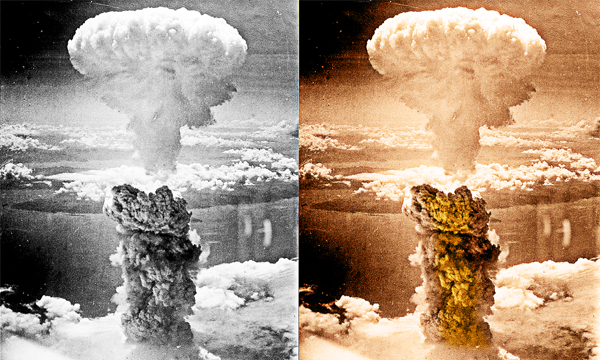
Atomic bombing of Nagasaki on August 09, 1945
Atomic bombing of Nagasaki: On August 9, 1945, Three days later after dropping the world’s first deployed atomic bomb over the Japanese city of Hiroshima, a second B-29 Boeing Superfortress bomber dropped another atomic bomb on Nagasaki, killing an estimated 30,000 people.
Japan’s Emperor Hirohito announced his country’s unconditional surrender in World War II in a radio address on August 15, citing the devastating power of “a new and most cruel bomb”.
The bombing of the Japanese city of Nagasaki with the Fat Man plutonium bomb device on August 9, 1945, caused terrible human devastation and helped end World War II.
The Target Committee appointed by President Harry Truman to decide which Japanese cities would receive the Little Boy and Fat Man atomic bombings did not place Nagasaki among their top two choices. Instead they identified Kokura as the second target after Hiroshima. In Kokura, a city of 130,000 people on the island of Kyushu, the Japanese operated one of their biggest ordnance factories, manufacturing among other things chemical weapons. The Americans knew all this, but strangely had not targeted the city yet in their conventional bombing campaign. That was one of the reasons the Target Committee thought it would be a good option after Hiroshima.
The third choice, Nagasaki was a port city located about 100 miles from Kokura. It was larger, with an approximate population of 263,000 people, and some major military facilities, including two Mitsubishi military factories. Nagasaki also was an important port city. Like Kokura and Hiroshima, it had not suffered much thus far from American conventional bombing.
After the bombing of Hiroshima on August 6, workers on Tinian island labored intensely to put the finishing touches on the Fat Man bomb and prepare it for use. This was a plutonium implosion device of far greater complexity than the Little Boy bomb used at Hiroshima, which used uranium-235 in a fairly conventional explosive mechanism. The scientists and ordnance experts at Los Alamos had agonized for years over how to use plutonium in an atomic weapon, and Fat Man was the result.
The decision to use Fat Man just days after the explosion of Little Boy at Hiroshima was based on two calculations:
the always-changeable Japanese weather—the appearance of a typhoon or other major weather event could force deployment to be postponed for weeks and
the belief that two bombings following in quick succession would convince the Japanese that the Americans had plenty of atomic devices and were ready to keep using them until Japan finally surrendered.
Reports of approaching bad weather convinced the Americans to drop the next bomb on August 9.
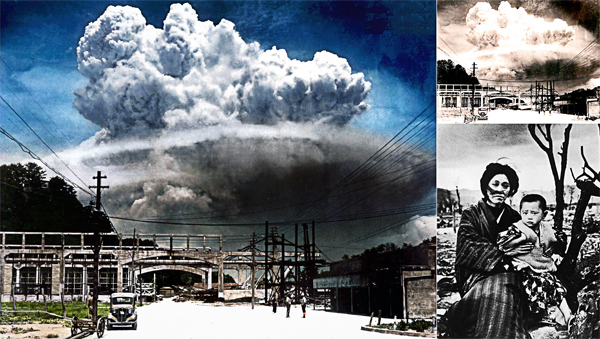
A B-29 named Bock’s Car took off from Tinian at 3:47 that morning. In its belly was Fat Man, and the atomic bomb was already armed. Major Charles W. Sweeney flew the plane, accompanied by the usual pilot, Captain Frederick C. Bock. The Enola Gay took part in the mission, flying weather reconnaissance.
Over Kokura, clouds and smoke from nearby bombing raids obscured visibility. The Americans could see parts of the city, but they could not site directly on the city arsenal that was their target. Sweeney flew overhead until Japanese antiaircraft fire and fighters made things “a little hairy”, and it was obvious that sighting would be impossible. He then headed for his secondary target: Nagasaki. In Kokura, meanwhile, civilians who had taken shelter after the air raid signal heard the all-clear, emerged, and breathed sighs of relief. None of them knew then, of course, how close they had come to dying.
Clouds also obscured visibility over Nagasaki, and Major Sweeney, running out of fuel, prepared to turn back toward Okinawa. At the last second a hole opened in the clouds, however, and Bombardier Captain Kermit K. Beahan announced that he could see his target. And so Fat Man began its journey, detonating over Nagasaki at 11:02 a.m. local time.
Fat Man detonated at an altitude of 1,650 feet over Nagasaki with a yield of 21 kilotons, about 40 percent more powerful than Little Boy had been. It did so almost directly above the Mitsubishi factories that were the city’s primary targets, rather than over the residential and business districts further south. Tens of thousands of civilians, especially children, had already been evacuated from the city. The series of hills bracing Nagasaki also somewhat confined the initial blast and restricted the damage.
Still, the impact was devastating, particularly because people had heard the all-clear after an earlier aircraft raid warning, and had left their shelters. Everything within a mile of ground zero was annihilated. Fourteen thousand homes burst into flames. People close to the blast were vaporized; those unlucky enough to be just outside that radius received horrific burns and, there and further out, radiation poisoning that would eventually kill them. Although estimates vary, perhaps 40,000 people were killed by the initial detonation. By the beginning of 1946, 30,000 more people were dead. And within the next five years, well over 100,000 deaths were directly attributable to the bombing of Nagasaki on August 9, 1945.
The National War WWII Museum / Wikipedia / Encyclopedia Britannica /
History Channel / U.S. Department Of Energy, The Manhattan Project - OSTI.gov / Atomic Heritage Foundation.org / National Archives.gov /
Search Films & Videos - Library Of Congress.gov / Truman Library.gov /
Atomic bombing of Nagasaki on August 09, 1945 (YouTube) 

Understanding Military Terminology
Q-route
(DOD) A system of preplanned shipping lanes in mined or potentially mined waters used to minimize the area the mine countermeasures commander has to keep clear of mines in order to provide safe passage for friendly shipping.
See also External Audience; Internal Audience.
Joint Publications (JP 3-61) Barriers, Obstacles, and Mine Warfare for Joint Operations
Quadruple Container
(DOD) A 57.5 inches x 96 inches x 96 inches container box with a metal frame, pallet base, and International Organization for Standardization corner fittings; four of these boxes can be lashed together to form a 20-foot American National Standards Institute or International Organization for Standardization intermodal container.
Also called QUADCON.
Joint Publications (JP 3-61) Barriers, Obstacles, and Mine Warfare for Joint Operations
Qualifying Entity
(DOD) A non-governmental organization to which the Department of Defense may provide assistance for special events by virtue of statute, regulation, policy, or other approval by the Secretary of Defense or his or her authorized designee.
Joint Publications (DODD 3025.18) Executive Services Directorate
Joint Publication - Department of Defense Dictionary of Military and Associated Terms
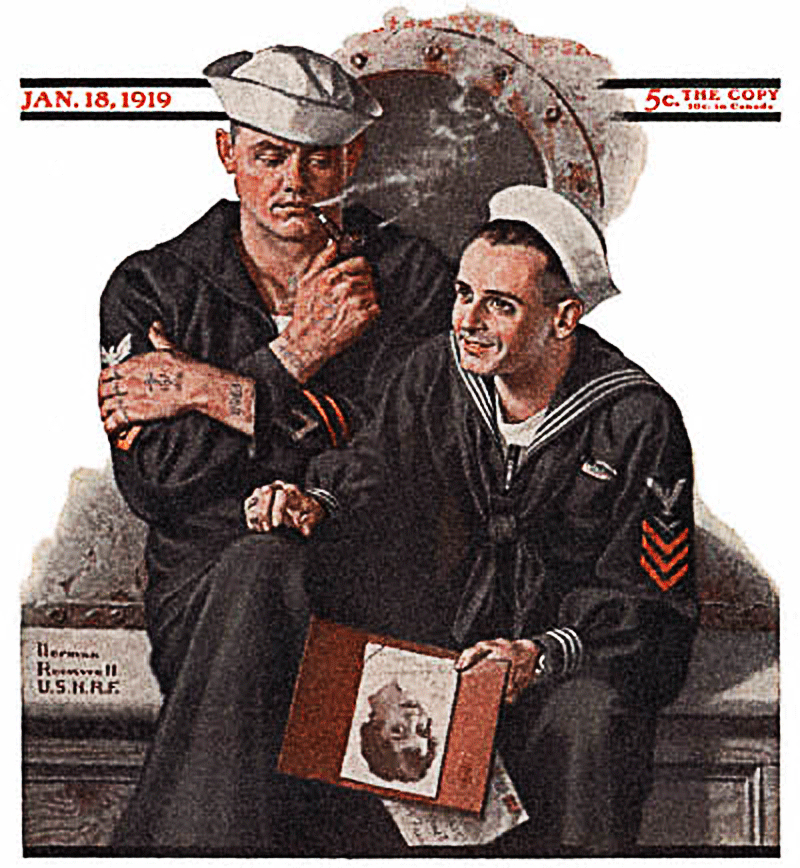
The Old Salt’s Corner
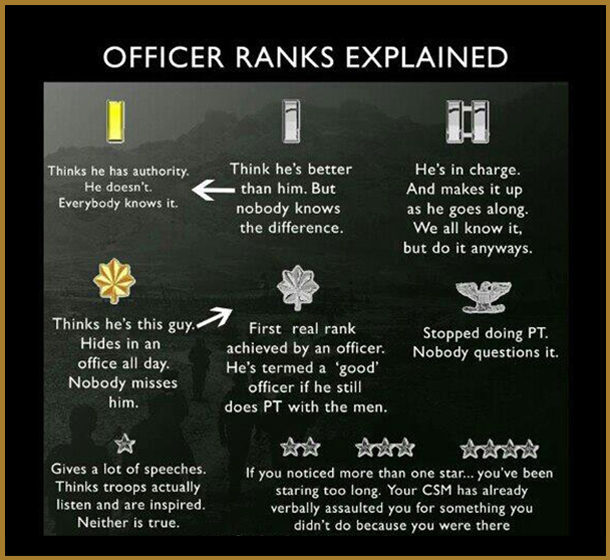

“I’m Just Sayin”
“Wisdom is oftentimes nearer when we stoop than when we soar.”
“Nature never did betray the heart that loved her.”
“A simple child that lightly draws it's breath and feels its life in every limb.
What should it know of death?”
“Come forth into the light of things,
let nature be your teacher.”
“Life is divided into three terms -
that which was,
which is,
and which will be.
Let us learn from the past to profit by the present,
and from the present,
to live better in the future.”
~ William Wordsworth

“Thought for the Day”
“Into each life some rain must fall.”
“It takes less time to do a thing right,”
than it does to explain why you did it wrong.”
“Nothing in life is to be feared,
it is only to be understood.
Now is the time to understand more,
so that we may fear less.”
“Ships that pass in the night,
and speak each other in passing,
only a signal shown,
and a distant voice in the darkness;
So on the ocean of life,
we pass and speak one another,
only a look and a voice,
then darkness again and a silence.”
~ Henry Wadsworth Longfellow

“What I Learned”
“Love will find a way through paths where wolves fear to prey.”
“The best prophet of the future is the past.”
“But words are things,
But words are things,
Falling like dew,
upon a thought,
produces That which makes thousands,
perhaps millions,
think.”
“There is pleasure in the pathless woods,
there is rapture in the lonely shore,
there is society where none intrudes,
by the deep sea,
and music in its roar;
love not Man the less,
love not Man the less,
but Nature more.”
~ Lord Byron
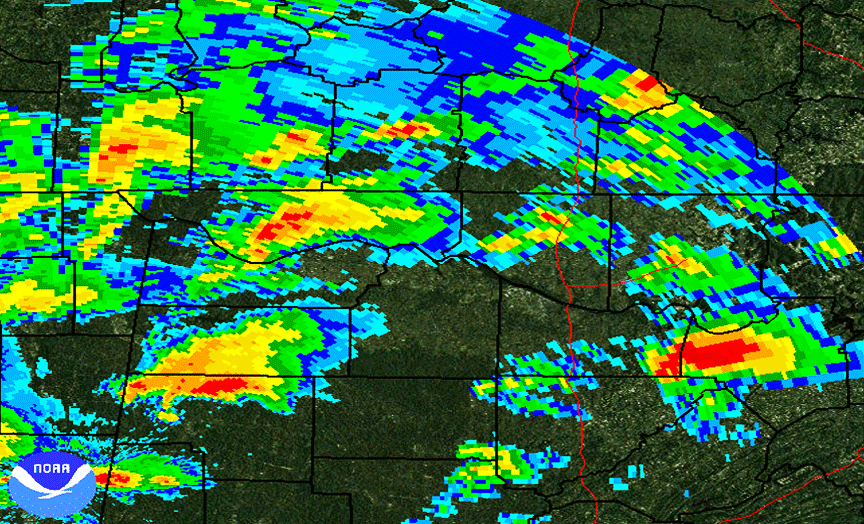 Mr. Answer Man Please Tell Us: How Does Weather Radar Work?
Mr. Answer Man Please Tell Us: How Does Weather Radar Work?
Doppler Radar Explained
A weather radar is an essential tool in the meteorologist’s toolbox, it allows them to detect precipitation and forecast the weather. Like satellite imagery of clouds, radar helps meteorologists better understand the weather around them, resulting in more reliable forecasts.
Radar (short for RAdio Detection And Ranging) and its use in weather was actually discovered by accident. With the increasing use of radar to detect enemy ships and planes during World War II, radar operators found precipitation also caused false echoes on their screens.
Military radars were repurposed for meteorological use after WWII, and subsequent upgrades enhanced their precipitation-detecting capabilities. Today’s weather radar imagery you find in your weather radar app is far different from those first radars of the 1950s, but the core concepts are the same.
How Modern Weather Radar Works
All radars operate in a similar fashion, no matter their technology. An antenna emits a beam of radio waves outwards. If there are objects in the air like rain, sleet, or snow, the emitted radio waves bounce off those objects and scatter. Some of these scattered radio waves are reflected back to the radar, with larger objects reflecting more.
Differences in reflectivity are plotted on a map to provide a view of precipitation falling within the range of the radar, providing the image you see on TV, the web, and your radar app.

How Does Doppler Radar Work?
Doppler radar works a little bit differently from older radars. Instead of merely just measuring the reflectivity of precipitation, it also detects the shape, position, and form as well. By measuring this, a Doppler radar can also measure the velocity of the movement of precipitation toward or away from the radar.
This allows Doppler radars to measure wind speed, making them extraordinarily useful in detecting tornadoes. Before, meteorologists had to look for visual cues, called a “hook echo”, in order to find tornadoes within storms. Since not every tornado will produce these hook echoes, many were missed.
You experience these “Doppler shifts” on a daily basis. Think about sitting at a light to allow an emergency vehicle to pass, or at a railroad crossing as a train goes by blaring its whistle. You’ll notice that the pitch sound rises as it approaches, is steady as it’s in front of you, and lowers in pitch as it moves away.
That’s the Doppler effect in action, and those shifts are what a doppler radar tries to detect.

Dual-Polarization Radar
Dual-polarization radar is an upgrade to Doppler radar which enhances its detection abilities. Instead of just sending out radio waves in a horizontal direction, “dual-pol” radars send out radio waves both horizontally and vertically.
The benefits of this is an enhanced ability to detect the shape of objects in the atmosphere. This allows meteorologists to differentiate between precipitation types, and even identify ground debris in the air. The image below shows how dual polarization has helped to confirm when a tornado is on the ground.
Before dual-polarization, we’d only have the velocity data on the left, which would allow us to suspect a tornado on the ground, but not confirm it without a ground spotter. The image on the right is called correlation coefficient, and the small circular blue area indicates an area of clear air encircled by objects detected in the air (the green color) and similarly shaped raindrops (shown in red). This is called a “debris ball”, and it's a telltale sign on a dual-pol radar of a tornado on the ground.

What’s Next for Weather Radar
Radars have revolutionized weather forecasting, especially when it comes to severe weather. And meteorologists aren’t stopping with Doppler radar: new technologies like phased array radar will improve detection, and also dramatically increase scan times. Instead of the 2-6 minutes each scan takes now in the Doppler radar system, phased array will be able to scan the same area in under a minute.
Phased array radar is expected to cost billions of dollars to implement, and with dual-polarization recently launched, it's unlikely to occur until well into the next decade.
Weather Station Advisor / Wikipedia / Encyclopedia Britannica /
Weather.gov / NOAA.gov - NEXRAD NOAA.gov / The Weather Channel /
How Does Weather Radar Work? (YouTube) 

NAVSPEAK aka U.S. Navy Slang
Sticks: The levers in the Maneuvering Room of a diesel submarine that are used to change the settings for the main propuslion motors.
Stroked Chit: Refers to a form of point deduction during boot camp, a stroked chit is a loss of five points to the company per grading period (one week) until Pass in Review.
Stupid-: Adjective for remedial training. I had to attend stupid-shoot and stupid-swim after the other trainees were at the club drinking 15-cent beers.
Sucking Rubber (Submarine Service): Extended periods wearing Emergency Air Breathing devices (EABs), a full-face air mask similar to that worn by firefighters, except fed from ship's emergency air system rather than a bottle on one's back.
Also refers to wearing a gas mask such as the MCU-2P for protection against chemical, biological or radiological attack.
Sucking Sarah: Derogatory term used to describe the USS Saratoga (CV-60), also called “The Sucking 60 from Dixie”.
Summer Creases: A term used to mock someone with a wrinkled shirt.
“I see you have summer creases in your shirt. Some'are here, some'are there, some'are everywhere.”
Wiktionary.org

Just for you MARINE
STOL: Short TakeOff/Landing, takeoff and landing technique needing only a short runway to become airborne. See also STOVL, VTOL & V/STOL.
V/STOL: Short TakeOff, Vertical Landing, takeoff and landing technique where a V/STOL aircraft will make a non-vertical take-off to carry greater weight, such as fuel and weapons, expend that weight, and make a vertical landing. See also STOL, VTOL, and V/STOL.
Suck: Mouth.
The Suck: Miserable situation or place, often refers to the Marine Corps or a combat zone.
Wikipedia.org
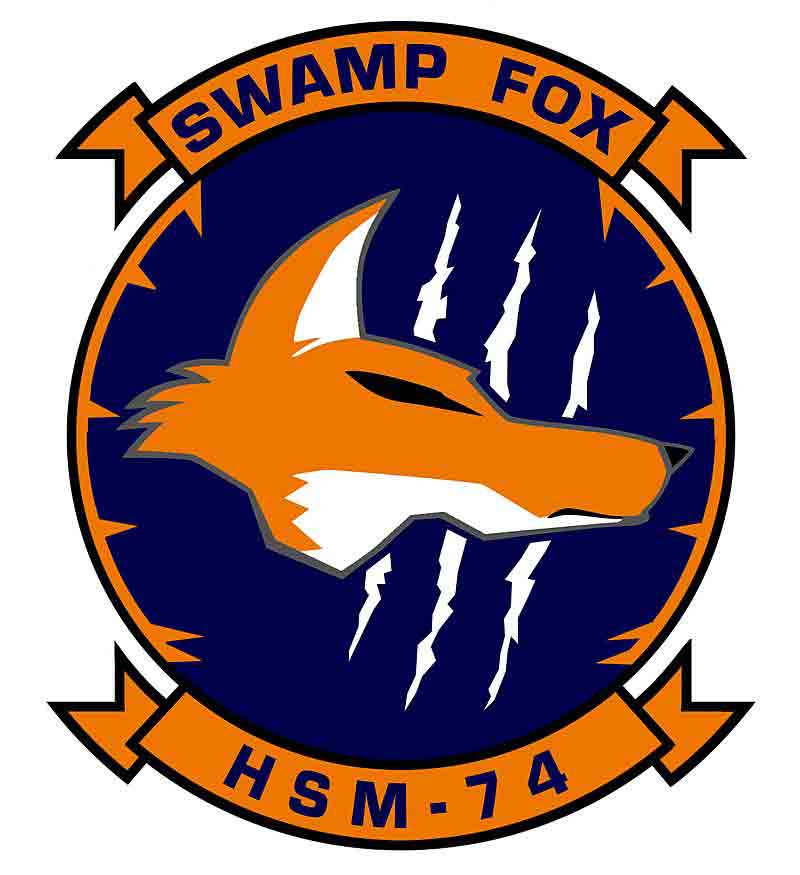
Naval Aviation Squadron Nicknames
HSM-74 Helicopter Maritime Strike (HSM) Squadron SEVEN FOUR - nicknamed the “Swamp Fox”
United States Navy - Marine Corps Commander, Helicopter Maritime Strike Wing Atlantic - Naval Air Station Jacksonville, Florida. / HSL-43: August 21, 1986 - June 2011 / HSM-74: June 2011 - present

Where Did That Saying Come From?

“A fool and his money are soon parted:”
Meaning: Literal meaning.
History: “A fool and his money are soon parted” is quite an early proverb in the English language and, as such, might be thought to contain the wisdom of the ancients.
The notion was known by the late 16th century, when it was expressed in rhyme by Thomas Tusser in Five Hundred Pointes of Good Husbandrie, 1573:
“A foole & his money, be soone at debate:
which after with sorow,
repents him to late.”
The precise wording of the expression comes just a little later, in Dr. John Bridges' Defence of the Government of the Church of England, 1587:
“If they pay a penie or two pence more for the reddinesse of them... let them looke to that, a foole and his money is soone parted.”
Phrases.org.uk

Science & Technology

FEATURED: Plutonium particles from nuclear testing more complex than previously thought
• New detector finds gamma rays from surprising cosmic sources
Global pollen samples reveal vegetation rate of change
• Hubble tracks down fast radio bursts to galaxies' spiral arms
• Radar tracking uncovers mystery of where honeybee drones have sex
Robotics group announces an ostrich-like, multi-purpose bot called Cassie
• Polish firm opens cutting-edge solar energy plant
• Scientists discover gene signature responsible for plaque-eating microglia in Alzheimer's disease
Scientists reveal structural details of how SARS-CoV-2 variants escape immune response
• Brain stimulation evoking sense of touch improves control of robotic arm
• Solar geoengineering may be effective in alleviating impacts of global warming on crops
Phys.org / MedicalXpress / TechXplore
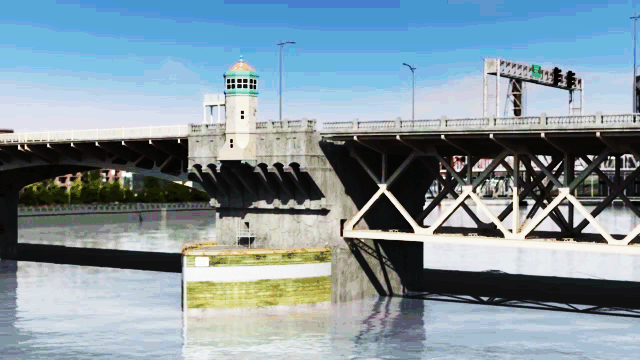
FEATURED: Deadly river “earthquakes” could be manageable
• Millions of electric cars are coming. What happens to all the dead batteries?
Lab-grown minihearts beat like the real thing
• More than half of Caribbean lizards and snakes disappeared after Europeans arrived
Two more coronaviruses can infect people, studies suggest
• Why is the world’s largest COVID-19 vaccine campaign faltering?
New type of imager could help spot smuggled nuclear materials
• Move over, Death Valley: These are the two hottest spots on Earth
Science AAAS

Bizarre News (we couldn’t make up stuff this good - real news story)
Spherical UFO plunges into the ocean in U.S. Navy footage
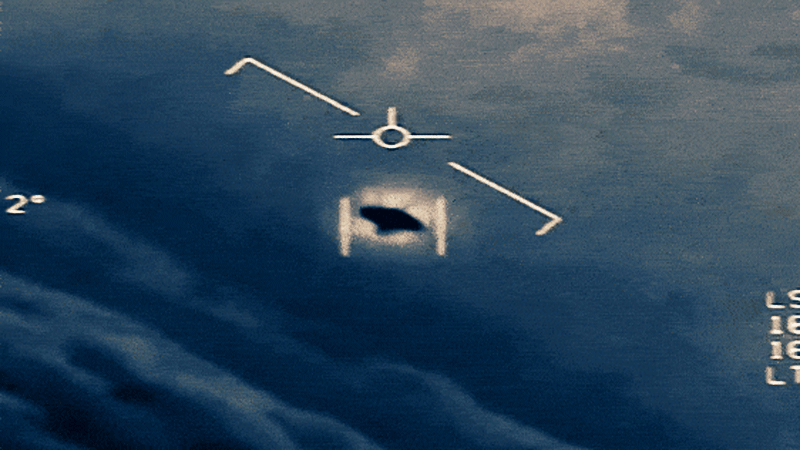
A filmmaker who produces UFO documentaries released the clip.
A spherical unidentified flying object (UFO) hovers in midair, moves side to side like a ball in the “Pong” video game and then seems to dive into the ocean, in footage that was recently released online by a filmmaker who produces documentaries about UFOs.
Though a Pentagon spokesperson confirmed that the U.S. Navy did capture the footage, the spokesperson did not comment on where and when it was filmed.
On May 14, Jeremy Corbell described the mysterious object on his website Extra Ordinary Beliefs, writing that “the U.S. Navy photographed and filmed “spherical” shaped UFOs and advanced transmedium vehicles" — craft that can travel through air and water — in 2019. Corbell also shared the footage on Instagram and YouTube.
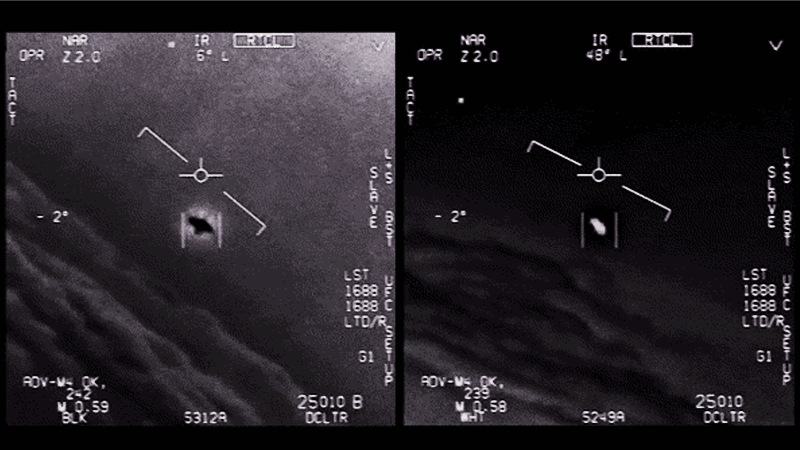
In the clip, which appears to have been shot off a monitor and has several edits, a dark, round blob sits above the horizon. Male voices are audible in the footage; one says “took off, bookin' it”, as the object moves horizontally in the screen's crosshairs. The scene “reached a crescendo” with the blob entering the water, and one of the off-screen voices says, “Whoa, it splashed!” as the UFO disappears, Corbell wrote.
According to Corbell, the footage was filmed on July 15, 2019, at approximately 11 p.m. PDT, from within the USS Omaha's Combat Information Center, near the coast of San Diego. Radar images of the UFO show a solid ball, measuring about 6 feet (2 meters) in diameter, flying at speeds of 46 to 158 mph (74 to 254 km/h). Its flight lasted over an hour, culminating with the sphere vanishing beneath the waves. No wreckage was found at the location where the object went down.
“A submarine was used in the search and recovered nothing," Corbell wrote. "We do not know what, if anything, the Navy or Pentagon might be willing to say about the USS Omaha incident, but we are confident the incident is a legitimate mystery and look forward to whatever information might be forthcoming”, he wrote on Instagram.
Pentagon spokesperson Susan Gough confirmed that U.S. Navy personnel did capture the footage that Corbell posted, The Debrief reported on May 14. Gough told The Debrief in an email that the footage was included in “ongoing examinations” by the Unidentified Aerial Phenomena Task Force (UAPTF), a U.S. Office of Naval Intelligence program that investigates reports of unexplained aerial vehicles, according to The Debrief.
However, Gough did not comment on any of the other UFO details that Corbell included in his writeup, The Debrief reported. The footage is not classified, and stills of the spherical UFO were previously included in a UAPTF intelligence briefing from May 1, Corbell wrote in a tweet on May 14.
More UFO-related disclosures may be coming from the Pentagon in the coming weeks, as a new UFO report is scheduled for release in June, Live Science previously reported.
If you can't wait that long, you can start by catching up on more than three decades of the U.S. government's once-secret UFO records. A new online archive includes more than 2,700 pages of CIA-declassified reports dating to the 1980s; the documents were obtained through the Freedom of Information Act and were uploaded as PDFs to The Black Vault website by author John Greenwald Jr., Live Science reported in January.
“”
Related: SEVEN things most often mistaken for UFOs
Live Science (05/25/2021) 


SONG FACTS
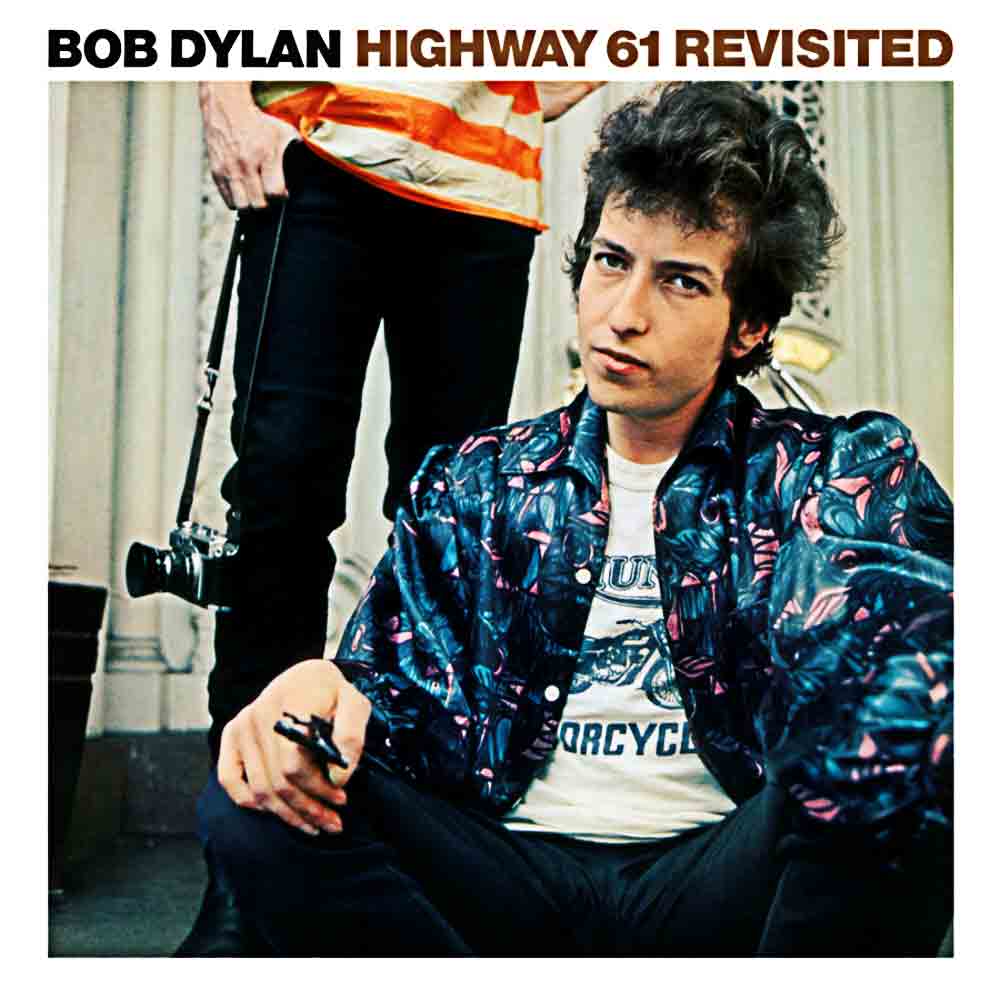
“Like a Rolling Stone”  - Bob Dylan
- Bob Dylan
Album: Highway 61 Revisited
Released 1965 
“Like a Rolling Stone”  was the only song on the album produced by Tom Wilson, who produced Dylan's second album, The Freewheelin' Bob Dylan. Wilson had been a jazz producer and was brought in to replace John Hammond. Wilson invited keyboard player Al Kooper to the session, and Al produced the famous organ riff that drove the song. This was the last song Wilson worked on with Dylan, as Bob Johnston took over production duties.
was the only song on the album produced by Tom Wilson, who produced Dylan's second album, The Freewheelin' Bob Dylan. Wilson had been a jazz producer and was brought in to replace John Hammond. Wilson invited keyboard player Al Kooper to the session, and Al produced the famous organ riff that drove the song. This was the last song Wilson worked on with Dylan, as Bob Johnston took over production duties.
The title is not a reference to The Rolling Stones. It is taken from the proverb “a rolling stone gathers no moss”. Dylan got the idea from the 1949 Hank Williams song
“Lost Highway”  , which contains the line, “I'm a rolling stone, all alone and lost”.
, which contains the line, “I'm a rolling stone, all alone and lost”.
Thanks to The Rolling Stones, many associate the phrase with a life of glamor, always on the move, but Williams' song is about a hobo paying the price for his life of sin. Dylan also used the phrase to indicate loneliness and despair: his rolling stone is ”without a home, like a complete unknown”.
Dylan based the lyrics on a short story he had written about a debutante who becomes a loner when she falls out of high society. The lyrics that made it into the song are only a small part of what was in the story.
“Like a Rolling Stone”  runs 6:13. It was a big breakthrough when the song got radio play and became a hit, as many stations refused to play songs much longer than 3 minutes. It was also rare for a song with so many lyrics to do well commercially.>
runs 6:13. It was a big breakthrough when the song got radio play and became a hit, as many stations refused to play songs much longer than 3 minutes. It was also rare for a song with so many lyrics to do well commercially.>
Dylan's manager, Albert Grossman, who revolutionized the music manager profession and was known as a shrewd defender of his artists, was the one who told Columbia Records that they couldn't shorten "Like a Rolling Stone" in order to make it more radio friendly.
Dylan recorded another version in 1970 for his Self Portrait album. This time, he used experienced session players in Nashville, Tennessee. Ron Cornelius played guitar on the album and told about the session:
“You're not reading manuscripts. In Nashville the players are booked because of what they can create right now, not what's written on a piece of paper. Everybody's creating their part as the tape is rolling. Out of everybody I've worked with, I don't know of anyone who's been any nicer than Bob Dylan. He treated me wonderfully, but at the same time you knew being around him day after day that this man wakes up in a different world every morning. On a creative level that's a really good thing and to try to second guess him or to ask him what he actually meant by these lyrics, you're shooting in the dark because he's not going to tell you anyway. And he might be telling you the truth when he says ‘I don't know, what does it mean to you’.”
It is rumored that this was written about one-time debutante Edie Sedgwick, who was part of artist Andy Warhol's crowd. She was the subject of an emotional tug-of-war between the Dylan camp and the Warhol camp.
According to this theory, the song includes some fanged, accusatory lines about Warhol and the way he mistreated the girl:
Ain't it hard when you discover that
He really wasn't where it's at
After he took from you everything he could steal
“Poor Little Rich Girl” Sedgwick is viewed by many as the tragic victim of a long succession of abusive figures. After escaping home and heading to New York, she ran into Warhol, who soon began to use her as his starlet. When her 15 minutes had come to an end, Warhol moved on.
Sedgwick and Dylan had a brief affair shortly before the musician married Sarah Lownds, and many say that this Dylan song was written about her. It should be noted that there is absolutely nothing beyond circumstantial evidence to support this idea, but the myth is so widely known that it's taken on a life of its own and is therefore recognizable on its own terms.
This made Bob Dylan an unlikely inspiration for Jimi Hendrix, who before hearing this considered himself only a guitarist and not a singer. After hearing this, he saw that it didn't take a conventional voice to sing rock and roll.
Hendrix often played
“Like a Rolling Stone”  , including a performance at the
“1967 Monterey Pop Festival”
, including a performance at the
“1967 Monterey Pop Festival”  . Hendrix and Dylan met only once, but Jimi had a knack for bringing out the emotions in Dylan's songs: he also did a very successful cover of
“All Along The Watchtower”
. Hendrix and Dylan met only once, but Jimi had a knack for bringing out the emotions in Dylan's songs: he also did a very successful cover of
“All Along The Watchtower”  .
.
The Rolling Stones didn't take their name from this song, but rather the 1950 Muddy Waters track
“Rollin' Stone”  .
The magazine Rolling Stone was named after this song, with a degree of separation: Ralph Gleason wrote a piece for The American Scholar about the influence of music on young people called “Like a Rolling Stone”, which he titled after the song. When he founded the magazine with Jann Wenner in 1967, they decided to name it after his story. Wenner muddied the waters a bit when he wrote in the debut issue:
.
The magazine Rolling Stone was named after this song, with a degree of separation: Ralph Gleason wrote a piece for The American Scholar about the influence of music on young people called “Like a Rolling Stone”, which he titled after the song. When he founded the magazine with Jann Wenner in 1967, they decided to name it after his story. Wenner muddied the waters a bit when he wrote in the debut issue:
“Muddy Waters used the name for a song he wrote. The Rolling Stones took their name from Muddy's song. ‘Like a Rolling Stone’ was the title of Bob Dylan's first rock and roll record.”
In the November 2004 issue, Rolling Stone Magazine named
“Like a Rolling Stone”  #1 on their list of the greatest songs of all time.
#1 on their list of the greatest songs of all time.
Greil Marcus wrote a book of almost 300 pages about this song. The book was released in 2005 and is titled “Like a Rolling Stone: Bob Dylan at the Crossroads”.
Al Kooper, who was primarily a guitarist and went on to be a very successful music producer, played this organ on this song. If you listen very closely at the beginning of this song, you will notice that the organ is an 1/8th note behind everyone else. Kooper wasn't an expert on the organ, but Dylan loved what he played and made sure it was turned up in the mix.
When we asked Kooper what stands out as his finest musical accomplishment, he told SongFacts: “By the amount of emails I receive and the press that I get it is undoubtedly the organ part on ‘Like A Rolling Stone’. I kinda like the way Martin Scorcese edited my telling of that story in the documentary No Direction Home. For me, no one moment or event sticks out. I think reading my resumé every ten years or so, is my finest moment - certainly my most incredulous. I cannot believe I did all the stuff I did in one lifetime. One is forced to believe in luck and God.” (See SongFacts interview with Al Kooper.)
A line from this song provided the title of the 2005 Martin Scorsese documentary about Bob Dylan called “No Direction Home”.
Jimi Hendrix's performance of this song at Monterey is a classic. Hendrix had made a name for himself in Europe, but didn't manage to make a dent in the U.S. market until the fabled Summer of Love. It happened at the Monterey Pop Festival in June 1967. All of a sudden, an artist who had struggled unsuccessfully for recognition in his own country became one of its future music legends.
Rolling Stone asked a panel of musicians, writers and academics to vote for Dylan's greatest song in a poll to mark Dylan's 70th birthday on May 24, 2011. This song came out on top, beating
“A Hard Rain's A-Gonna Fall”  and
“Tangled Up In Blue”
and
“Tangled Up In Blue”  into second and third places respectively.>
into second and third places respectively.>
Dylan's original draft of the song's lyrics were written on four sheets of headed note paper from the Roger Smith Hotel in Washington, D.C. The quartet of handwritten pages fetched over $2 million at Sothebys New York in June 2014, setting a new price record for a popular music manuscript. The previous record was John Lennon's handwritten lyrics for the 1967 Beatles track
“A Day In The Life”  , which cost $1.2 million.
, which cost $1.2 million.
The Rolling Stones recorded
“Like a Rolling Stone”  for their 1995 album Stripped. Stones guitarist Keith Richards explained:
for their 1995 album Stripped. Stones guitarist Keith Richards explained:
“We got over the built-in reticence. If he [Bob Dylan] had written ‘Like a Beatles’, we probably would have done it straight away. We've been playing that song ever since Bob brought it out; it was like a dressing room favorite, a tuning room favorite. We know it really well. It was just a matter of screwing up the courage, really, to get over the feeling like we were riding on its back. We also realized that, hey, we took our name from a Muddy Waters album, a Muddy Waters song. Suddenly it didn't feel awkward to play it.”
An early manuscript of this song in the Dylan archives at the Center for American Research in Tulsa reveals some lyrics that were later changed or removed. Instead of “You used to laugh about”, it was “You used to make fun about”. Some lines that were excised:
You've studied all these great theories on life
And now you find out they don't mean a thing
You've been blessed by counts these old friends claimed to love
Now they're all ashamed of you
John Mellencamp performed
“Like a Rolling Stone”  with Al Kooper at a Bob Dylan tribute concert held in Madison Square Garden on October 16, 1992.
with Al Kooper at a Bob Dylan tribute concert held in Madison Square Garden on October 16, 1992.
MORE SONGS

“Don't Think Twice, It's All Right” (1963) 
“Blowin' in the Wind” (1963) 
“The Times They Are a-Changin'” (1964) 
“It Ain't Me Babe” (1964) 
“Mr. Tambourine Man” (1965) 
“Positively 4th Street” (1965) 
“Rainy Day Women ♯12 & 35” (1965) 
“I Want You” (1966) 
Bob Dylan, official site (Bob Dylan Discography) / Rock & Roll Hall of Fame / Billboard / All Music / Song Facts / Ultimate Classic Rock / Wikipedia
Image: “Highway 61 Revisited (album)” by Bob Dylan
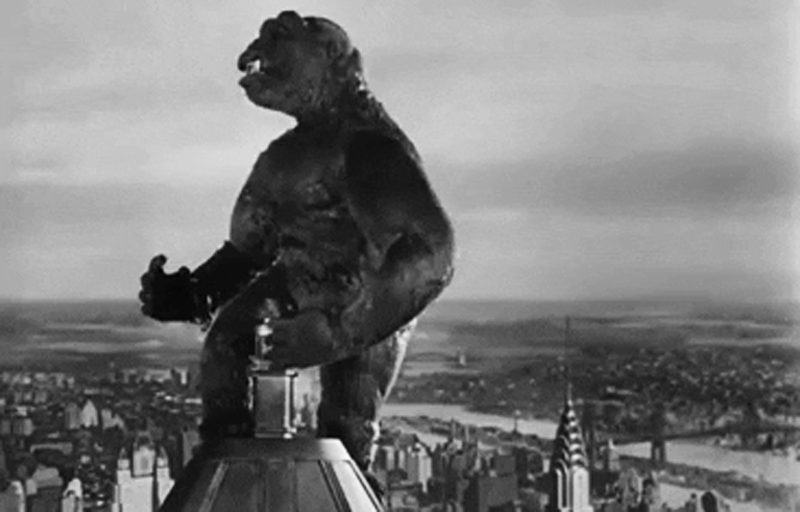
Trivia
● What is the name of King Kong's home island?
Answer to Trivia
READ MORE: Fandom
● In the 1890's, what type of cheese did a California man named David Jacks introduce?
Answer to Trivia
READ MORE: Quizzclub
● What is a narrow strip of land that connects two larger landmasses and separates two bodies of water?
Answer to Trivia
READ MORE: National Geographic.org
● What kind of cool star will our Sun become in approximately 5 billion years?
Answer to Trivia
READ MORE: Space.com
● What was Harry Houdini's birth name?
Answer to Trivia
READ MORE: Encyclopedia Britannica

A Test for People Who Know Everything
From the Jeopardy Archives Category - “USELESS BODY PARTS” ($200)
“AKA permanent maxillary third molars, these teeth can help you chew, but about 85% of us will need to get them removed.”
Answer to Jeopardy READ MORE: WebMD
From the Jeopardy Archives Category - “USELESS BODY PARTS” ($400)
“In animals, arrector pili muscles raise hairs, making them look larger; in humans, they only cause this “fowl” effect.”
Answer to Jeopardy READ MORE: National Institutes of Health (NIH).gov
From the Jeopardy Archives Category - “USELESS BODY PARTS” ($600)
“This more common name for your coccyx tells you what useless body part it once belonged to.”
Answer to Jeopardy READ MORE: Spine-Health
From the Jeopardy Archives Category - “USELESS BODY PARTS” ($800)
“Not only do men have nipples, they also have these accompanying glands that serve no male purpose.”
Answer to Jeopardy READ MORE: Science Direct
From the Jeopardy Archives Category - “USELESS BODY PARTS” ($1,000)
“We can't use it to detect pheromones like other animals, but we have a vestigial version of Jacobson's organ in this body part.”
Answer to Jeopardy READ MORE: Encyclopedia Britannica
Joke of the Day
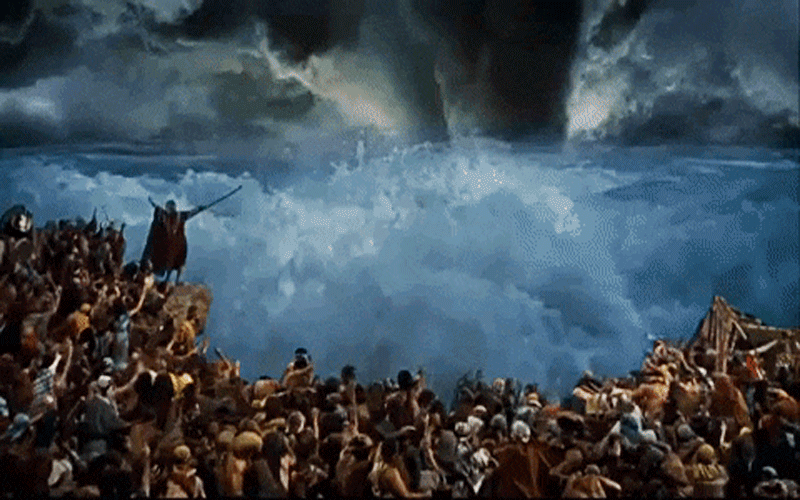
“Moses, Jesus and an Old Man Play Golf”
Moses, Jesus and an old man are golfing.
Moses steps up to the tee and hits the ball.
It goes sailing over the fairway and lands in the water trap.
Moses parts the water and chips the ball onto the green.
Jesus steps up to the tee and hits the ball.
It goes sailing over the fairway and lands in the water trap.
Jesus just walks on the water and chips the ball onto the green.
The old man steps up to the tee and hits the ball.
It goes sailing over the fairway and heads for the water trap.
But, just before it falls into the water, a fish jumps up and grabs the ball in its mouth.
As the fish is falling back down into the water, an eagle swoops down and grabs the fish in its claws.
The eagle flies over the green where a lightning bolt shoots from the sky and barely misses it.
Startled, the eagle drops the fish.
When the fish hits the ground, the ball pops out of its mouth and rolls into the hole for a hole-in-one.
Jesus then turns to the old man and says, “Dad, if you don’t stop fooling around, we won’t bring you next time.”
































